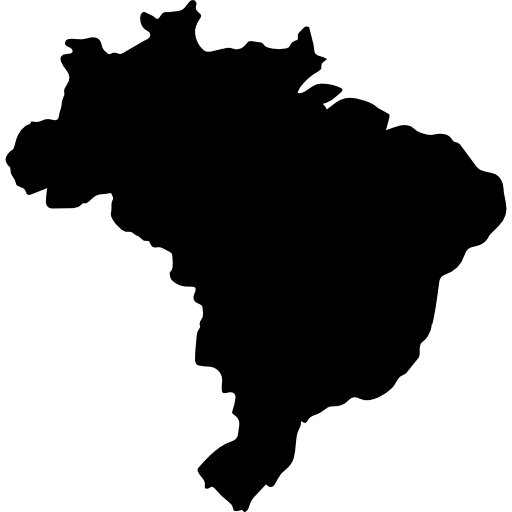TABLE TALKS: Fires in Brazil and Hurricane Dorian
October 31, 2019
It’s climate vs. economy in Brazil as fires burn 7,000 square miles of Amazon rain forest
 Often referred to as the lungs of the world, the Amazon rainforest is said to provide around 20 percent of the world’s oxygen.
Often referred to as the lungs of the world, the Amazon rainforest is said to provide around 20 percent of the world’s oxygen.
That turns out not to be exactly true, but huge fires that burned there last summer are dangerous for another reason. Trees and other plants absorb carbon dioxide — the most serious threat to global temperatures — so losing huge swaths of plant-filled forests can injure the climate, scientists say.
Fires are common in forests everywhere, but the blazes in Brazil over the summer were almost double what had been experienced the year before. An article from National Geographic said that as of Aug. 22, 7,000 square miles of the Amazon were aflame, and there had been about 76,000 fires in total in the region this year.
In all, 2.24 million acres had burned this year, 130,000 acres in August alone. Since then, more fires have burned through the rainforest and are expected to keep burning as the dry season (summer in the Southern
Hemisphere) continues and intensifies.
According to National Geographic, most of the fires were caused by humans. Some were set in lands that had been previously cleared for the purpose of removing excess vegetation efficiently, while others were being cleared to make room for cattle and crops. Farmers and ranchers both benefit from setting fire to dried-out trees in order to open up land to be used for agriculture.
Most observers blame the policies of Brazil’s new president, Yair Bolsonaro, which have encouraged economic development in the economically disadvantaged region. Bolsonaro’s government claims most of the fires were set by natural phenomena, such as lightning.
He also campaigned on a promise to open up the Amazon to development, to help those who live there advance economically.
“We cannot forget that the world needs to be fed,” Bolsonaro said at the United Nations climate meeting in New York Sept. 25. He also said the Amazon rainforest belongs to Brazil. “It is a fallacy to say that the Amazon is a world heritage,” he said.
According to Christian Poirier, the program director of Amazon Watch, a nonprofit organization created to protect the Amazon by advancing the rights of the indigineous people in the Amazon Basin as well as campaigning to preserve the Amazon’s ecological system, nothing was unusual about this year’s seasonal weather changes compared to last year’s.
For its part, NASA — the U.S. space program, which studies satellite imagery of the entire planet — says it’s too soon to tell what caused the fires.
“It is not unusual to see fires in Brazil at this time of year due to high temperatures and low humidity,” says an Aug. 23 article. “Time will tell if this year is a record-breaking or just within normal limits.”
But another satellite-reading federal agency — NOAA, the National Oceanic and Atmospheric Administration — said the fires’ effect is known
“Wildfires release large amounts of carbon dioxide, black carbon, brown carbon and ozone precursors into the atmosphere,” according to a fact sheet on NOAA’s website. “These emissions affect radiation, clouds and climate on regional and even global scales.”
The Amazon absorbs around 90 billion tons of carbon as well as greenhouse gases to prevent them from clouding and polluting the environment according to an article by AP News.
Hurricane Dorian tragedy in the Bahamas moves freshmen to act — maybe
A freshman class poll in the days after Hurricane Dorian ravaged the Bahamas showed only a fifth of the students had ever heard of the storm, which scientists said was one of the strongest hurricanes the world has ever experienced.
But once they found out about it, two-thirds said they’d be willing to donate $2 to help the victims — said to be tens of thousands of people who’ve lost everything, including the cities they lived in.
Freshmen Benjamin Gamson and Talia Shapira conducted the poll as part of a ninth-grade journalism assignment. They said they would consider starting a fund together after their article is published.
They said that to their surprise, changing the polling question made people more generous.
First students were asked, “Are you interested in efforts to help the victims of Hurricane Dorian,” without any specific way of helping. Fifty percent said yes.
But the next question asked was “Would you be willing to donate $2 to help victims” of the storm.
“When we gave them a specific number that they could donate, the percentage went up from 50 percent to 66.7 percent,” Benjamin said, “and even though 100 percent of people in the class haven’t helped, 66.7 percent said they would donate $2 to help.”
Thirty students were polled through an online Google form on Sept. 13, Benjamin said.
Talia said that she and Benjamin will decide after Rosh Hashanah whether to start a GoFundMe.org campaign collecting money for Dorian victims.
“After working on the article for journalism and learning more about the hurricane, I started to care more about helping the people who were affected by this,” said Talia.
Money is something the Bahamas definitely will need. Hurricane Dorian is the costliest disaster in Bahamian history, estimated to have left behind $7 billion in property damage. As the Bahamas were recovering it was hit by a new tropical storm this past Friday which will only add to the damage and recovery that will be needed.
The tens of thousands of people in its path had little time to react. Dorian began as a tropical storm Aug. 24 and quickly developed, growing over the course of six days from a tropical storm into a category 5 hurricane by Sept. 1.
It then lingered cruelly over the Bahamas for almost 48 hours, a stationary storm with steady hurricane force winds as strong as a tornado. About The 70,000 people were left homeless, about 2,500 are missing. As of Sept. 23, 50 people have been confirmed dead as the death toll continues to rise.
Hurricane Dorian is also notable for how far it traveled. After the Eastern Caribbean, it traveled past Puerto Rico and the US Virgin Islands at 13 miles per hour. When Dorian hit the warm water of the Atlantic it intensified and became catastrophic for the people of the Bahamas.
Its force dissipated when it traveled to the United States passing Florida and deluging South Carolina with 90 mile-per-hour winds. What began as a Category 2 storm left 200,000 people without power.
It later struck Canada, causing heavy rainfall and wind damage in Nova Scotia, Canada — a part of the East Coast too far north to have been struck by many hurricanes in the past.
